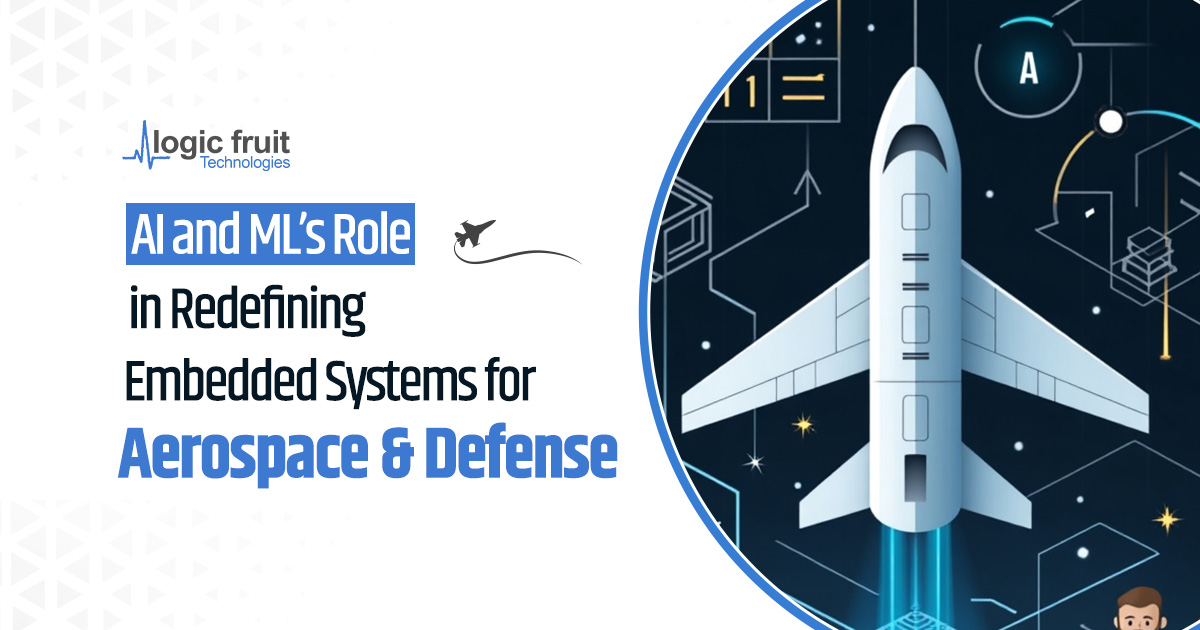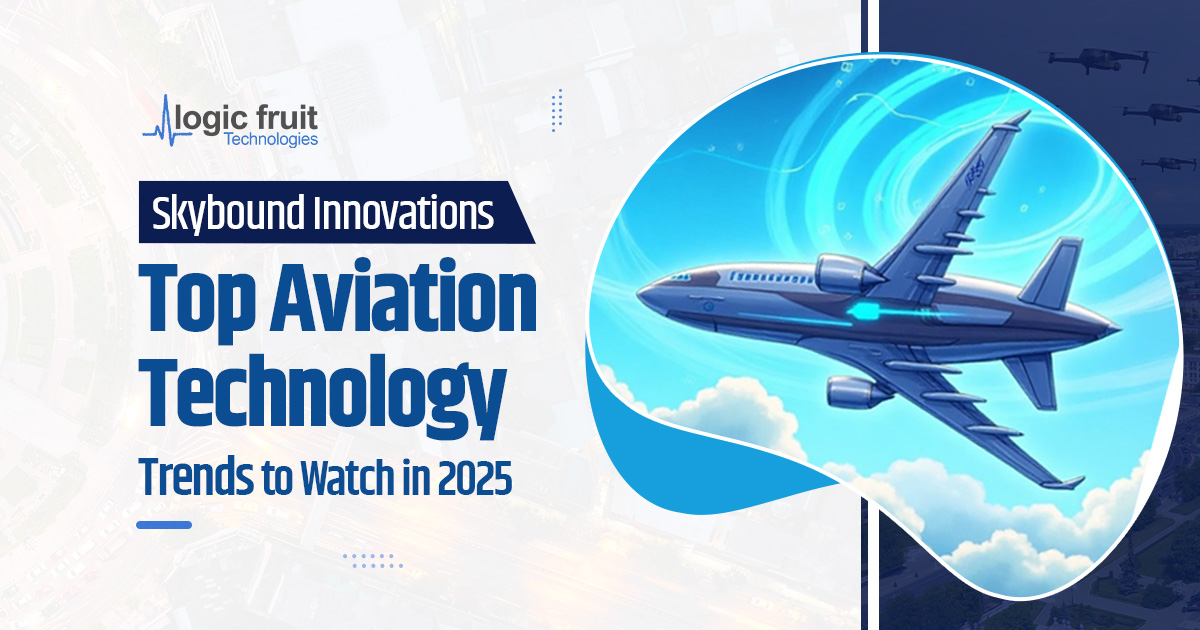In an era defined by technological innovation, the integration of AI and ML i.e. Artificial Intelligence (AI) and Machine Learning (ML) has emerged as a transformative force across various industries.
Among the fields harnessing the power of these technologies, the aerospace and defense sectors stand at the forefront of innovation, leveraging AI and ML to redefine the capabilities of modern aircraft, spacecraft, and military operations.
This synergy between cutting-edge technology and complex engineering has not only revolutionized traditional practices but has also opened doors to novel applications that were once deemed science fiction.
The significance of AI and ML in aerospace and defense cannot be overstated. The complexities inherent in these domains, where safety, precision, and real-time decision-making are paramount, have catalyzed the adoption of AI-driven solutions.
This blog delves into the multifaceted applications of AI and ML in aerospace and defense, exploring their role in shaping the future of flight, space exploration, and military strategy.

Top areas that AI and ML are being used by aerospace manufacturers today
By anticipating maintenance problems early, keeping planes in the air longer, and lowering costs, AI and ML are revolutionizing the aerospace manufacturing industry.
They also aid in improved flight planning, reducing emissions and fuel consumption. Automation of cockpits, streamlined supply chains, improved quality control, and even improved passenger experiences are all made possible by these technologies. In this part, we talk about how AI and ML are being used by aerospace:
Predictive Maintenance

To maintain an aircraft’s safety, maintenance is required. An airplane may experience numerous unforeseen maintenance concerns. AI-enabled predictive maintenance is being used by the aviation industry to fix these problems.
Potential faults can be identified and reported in real-time more quickly thanks to predictive maintenance. It makes sure that the process plan is more efficient and quick by anticipating the timeline for repairs.
A vast amount of data is provided as the input, and with the aid of AI and solutions for preventive maintenance, data points, and insightful conclusions are produced as the output. The entire procedure aids in resolving a problem before it occurs.
Optimized flight performance

One of the most critical metrics for aircraft OEMs is fuel efficiency, which may be improved with artificial intelligence. Making lightweight airplane components allows even any slight increase in fuel efficiency to have a significant influence on the aircraft’s emissions.
By assessing crucial data like the fuel system, system state, weather conditions, and other significant elements that may be reviewed in real-time to optimize a flight path, AI is assisting pilots during flights.
AI also lays the path for better human-machine collaboration in the aerospace industry by minimizing time-consuming tasks.
Generative design
In the aerospace sector, artificial intelligence is being employed to develop creative ways to design parts that are more effective, quicker, and lighter.
In the aerospace industry, generative AI is making significant progress, especially in the production of images and movies. To help with the production process, engineers and designers can utilize it to create accurate and thorough 3D models of aircraft parts.
This allows for improved quality control, faster prototyping, and perhaps lower production costs. Furthermore, generative AI will enable virtual reality training simulations that will improve the competency and safety of pilots and crew members.
Utilizing machine learning techniques, new novel product designs are being developed based on the current requirements.
It is simpler for engineers and product designers to determine the optimal design because there are many possibilities available in a short period.
Efficient supply chain management

The aviation sector is streamlining processes by integrating AI into the supply chain. Increased supply chain efficiency makes it easier to maintain equipment and perform routine repairs than it would be if done manually.
This also saves money and reduces downtime because it is known in advance when to perform the repairs. It is simple to increase the effectiveness of supply chain management using automated data collecting.
Improved quality control

The basic goal of quality assurance is to guarantee that a product or service continues to meet the desired standards of quality. This is accomplished by paying close attention to every stage of the production process.
An autonomous AI solution can automate QA, which can save a ton of time and money. Machine learning has helped to boost the rate of fault discovery by approximately 90% by automating quality testing.
Training

With the use of AI-enabled simulators combined with virtual reality systems, pilot training facilities can be improved. Pilots will receive a more lifelike simulation experience.
These simulators can also be used to gather and evaluate various training-related data to produce customized training data that uses biometrics to monitor a user’s performance.
Cockpit Automation:
Artificial Intelligence and Machine Learning are revolutionizing the field of autopilot. Nevertheless, these technologies go beyond data mining to provide predictive analytics, assist in decision-making related to complex situations, or even take over some flight stages.
This is achieved by using AI and ML algorithms that work harmoniously with existing cockpit systems which confer on the pilots heightened situational awareness, tailored workflows, and augmented decision-making faculties.
Cockpit automation as a consequence of the aerospace industry’s adoption of such advances therefore acts as a foundation for safer, more productive, and technologically advanced aviation system development programs.
How will AI & machine learning impact aerospace and defense?
Increased safety & compliance

To develop aircraft more automatically, AI may create models of what people do and how they act. It can also look at aircraft specifications. This can reduce human error and increase safety. It’s almost like an automatic checkup.
Autonomous air traffic control

The aerospace industry is hardly a stranger to autonomy. It’s quite common and simple to get a plane to fly itself and perform the takeoff and landing motions. Automating air traffic control systems, which at the moment faces a variety of difficulties, is the problem.
The complexity of air traffic control systems can only be handled by AI and machine learning without posing serious safety issues. This is a crucial first step in getting people to embrace a shift toward greater autonomy.
Aircraft development, modeling, & testing

System modeling in the aircraft industry includes artificial intelligence heavily. Nevertheless, not all simulations require direct human interaction to function. In addition to helping with the development of the hardware model, software, and simulation environments, AI may also predict specific types of codes.
The development and testing process is more productive thanks to this combination, which also reduces delivery time. Additionally, it increases accuracy because machines are frequently better at spotting errors than human engineers are.
Physical prototyping is also not a practical alternative for testing new aircraft systems due to the significant margins. A crash in a populous place poses a risk and costs hundreds of millions of dollars for each fatal error.
Engineers can relocate testing to a virtual environment with the aid of AI and machine learning, increasing the likelihood that a model will succeed before an actual prototype is created.
Conclusion:
In conclusion, a new era of possibilities has begun as a result of the integration of AI and ML with aerospace and military.
These technologies, which range from autonomous systems to data-driven business models, have completely altered the business environment.
However, moral quandaries and security issues serve as a reminder of the necessity of responsible innovation.
In the future, the combination of human intellect and AI/ML promises even more significant advances.
New horizons, collaborative systems, and quantum computing all beckon.
Let’s keep in mind as we go through this new region that the ultimate test of progress is found in our capacity to use these developments for the benefits of humanity while keeping our moral and ethical principles.










